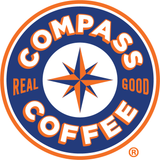Unraveling the Caffeine Mystery
Coffee and espresso are two beloved beverages that fuel millions of people around the world. They both offer a dose of caffeine, providing that much-needed kick to start our days or keep us going during long afternoons.
But which one delivers a stronger punch?

Caffeine
To understand the caffeine content in coffee and espresso, we must first understand caffeine itself.
Caffeine is a natural stimulant found in various plants, including coffee beans. It stimulates the central nervous system, enhancing alertness and temporarily fighting off fatigue. Caffeine levels can vary based on brewing method, bean type, and serving size.
Coffee versus Espresso
Coffee, whether served in a French press, a pour-over, or the fabled black coffee from your grandparents' coffee pot, generally adheres to this rule. An 8-ounce cup of coffee contains around 95 milligrams of caffeine.
Espresso, which is a highly concentrated form of coffee that was first popular in Europe but can now be found in cafes worldwide, typically contains approximately 63 milligrams of caffeine per 1-ounce shot.
So, in the battle for caffeine supremacy – coffee versus espresso – an 8-ounce cup of coffee has more caffeine than a 1-ounce shot of espresso, with 95 milligrams compared to 63 milligrams, respectively.
Of course, you could order a double espresso to pump those caffeine numbers up to 126 milligrams (63 x 2) instead of the mere 95 milligrams in an 8-ounce cup of coffee; however, we certainly don't recommend consuming an entire 8-ounce cup of pure espresso. That drink would contain a whopping 504 milligrams of caffeine. (You can Google what happens if you do that).

Other Variables
While the above provides a summary of the average caffeine content in your favorite mug or shot, it's important to note that several variables impact the actual caffeine levels in both beverages. These include the type of coffee beans, roast level (light or dark), brewing time, and brewing method. For more information on these factors and other popular questions, read our previous blog "The most common myths, misconceptions, and factoids about coffee that even the most devout coffee lovers get wrong."
Conclusion
So, whether you enjoy the gradual awakening of a comforting cup of coffee or the swift jolt of an espresso shot, both options offer their unique caffeine experiences. At Compass, we serve both coffee and espresso in all our cafe locations or you can purchase any of our products directly from our online store.

Our mission
At Compass Coffee, our mission is to inspire you at every step of your daily journey and make sure you’re always headed in the right direction.
Real Good Coffee




